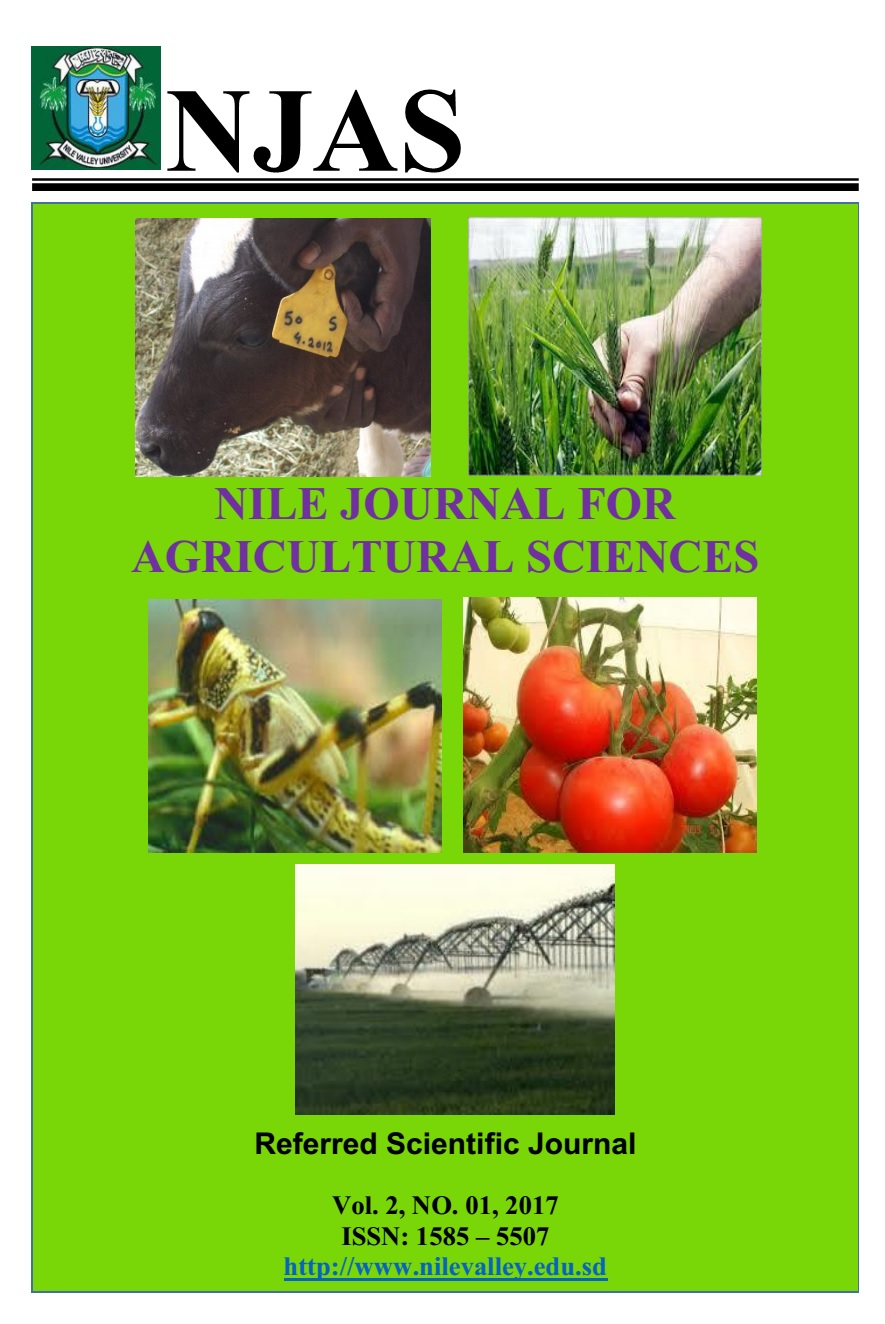Effect of Irrigation Frequency, Furrow Length and Farm Yard Manure on Salt-Affected Soil in Dongola Area
الملخص
A field experiment was carried out at Dongola University Farm, in Northern State to investigate the effect of irrigation frequency seven days, fourteen days and twenty one days, furrow length five meters (F5) and ten meters(F10) with and without addition of farm yard manure (M1 and M0) on salt leaching under saline-sodic aridisols. The quantity of water applied was estimated according to Jensen and Haise equation where the total water quantity was the same by the end of the experiment. The experiment was designed in a split – plot design, where irrigation frequency was assigned to the main plot and the furrow length (F) and FYM (M) were assigned to the sub-plots. In general, the results indicated that the irrigation frequency of 7 days enhanced salt leaching from the soil depth. Generally, the reduction in ECe due to irrigation frequency was as follows: I7 > I14 > I21. The data obtained indicated that the addition of FYM (M1) significantly decreased ECe and leached it below the soil depth, compared with the plots without FYM (M0). Generally, the salt leaching plots showed a leached zone underlied by a salinized zone. In general, irrigating every 7 days (frequent irrigation), adding FYM at the rate of 5 tons/fed with the furrow length of 5 meters, resulted in the lowest ECe.

